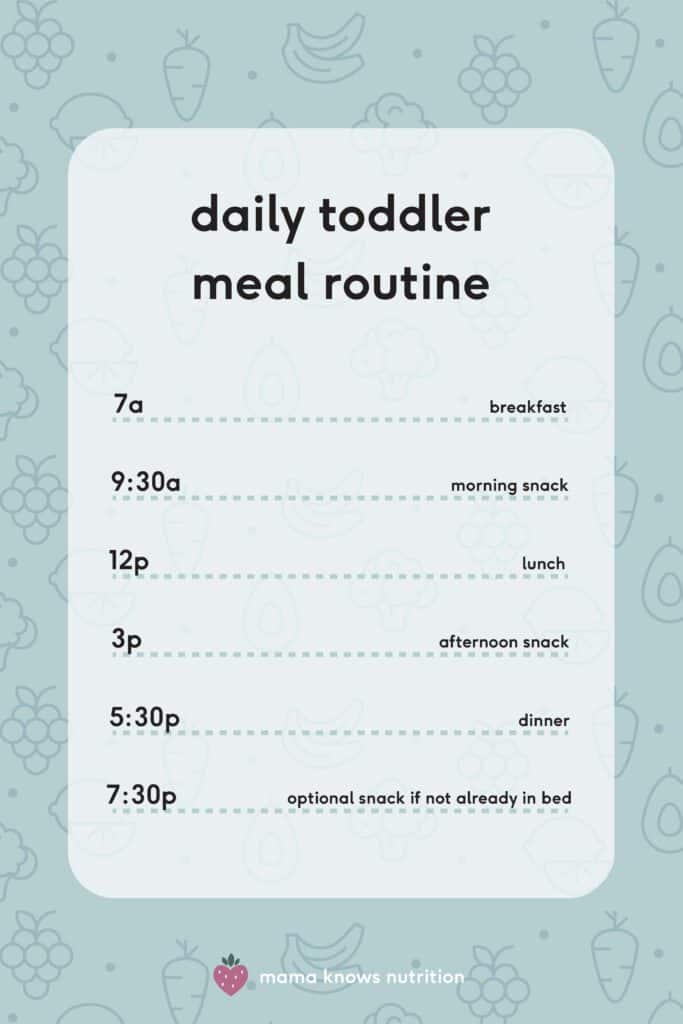Where to Start with a Picky Eater
Feb 15, 2019, Updated Nov 08, 2023
This post contains affiliate links. Please see our disclosure policy.
Before anything else — CLICK HERE to download my FREE guide for picky eaters, which includes a daily schedule and the simple chart I recommend ALL parents of picky eaters fill out, to get your little one on the right track.
If your little one won’t try new foods, stops eating foods they used to eat, or keeps getting harder and harder to cook for, you are in the right place! Today I’m talking about where to start with a picky eater. It can be an overwhelming and confusing place for you to be.
As both a mom of a picky eater AND a registered dietitian who works with picky eaters, I’m here to steer you on the right path.

Step 1: Rule out medical causes
If you have concerns about your picky eater – schedule a visit with the pediatrician (if you don’t have an appointment coming up soon). You want to make sure that the picky eating isn’t related to an underlying medical issue, which a pediatrician can help sort out. Also, you will check on your child’s growth chart to make sure the pediatrician is happy with their growth in weight and height.
You may feel like your picky eater hardly eats anything, and be surprised to learn that their growth is right where it should be. It is typical for kids in roughly the 2-5 age range to eat less than they did as a baby, and for their appetite to seem low. But, you want to double check that they are growing appropriately.
Step 2: Establish a meal and snack routine
Sometimes, picky eaters are picky because they are snacking too often and don’t have a chance to build up their appetite in between meals and snacks. Other times, they choose to eat little (or nothing) at meals because they know they can have something “better,” aka snack food, in a little while, and they can just hold out for that.
The best way to move beyond those problems is to establish a regular meal and snack routine. I like the word ‘routine’ better than ‘schedule’ because your schedule likely varies from day to day. So meals and snacks do not have to be at EXACTLY the same times every day for this to work.
Most young kids ages 1-5 do well with 3 meals and 2 snacks. Optionally, there will be a 3rd snack (after dinner) if dinner is 2 or more hours before bedtime.
Here is a sample day:

Step 3: Adopt a policy of variety – don’t repeat the same foods 2 days in a row
With picky eaters, the variety in their diet can shrink down considerably. One of the best ways to combat this is to have a rule where you do not serve the same foods two days in a row (milk is an exception). Even if your child is only two years old, you can explain to them that there’s a rule in your house that you do not eat the same exact things two days in a row.
This serves as a helpful reminder to you to keep introducing them to a variety of foods, even if they don’t eat many of the foods you serve.
Download my picky eater guide HERE to get the chart I use for this. First, you want to make sure that there is at least one food in each food group that they like. If one or more groups are empty, they can be at risk for nutrient deficiencies, and I suggest talking to the pediatrician or a dietitian for help.
Step 4: Remember that it’s not your fault
Moms can feel like picky eating is their fault, or they are doing something wrong. Feeding young kids is difficult, and feeding picky eaters presents many challenges. You are doing your best. It is NOT your fault when they decide not to eat something you made, so take that burden off of yourself!













